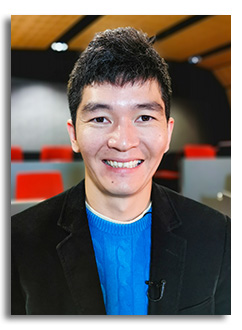
Abstract
Emerging solar cells (known as third generation photovoltaic) including perovskite solar cells, dye-sensitised solar cells, organic solar cells and silicon-based heterojunction solar cells have attracted increasing attention due to their low-cost, high efficiency, ease of fabrication and tailorable design. Despite their great promises, these solar cells do have some disadvantages such as use of expensive electrode materials, the high temperature required during production and poor operational stabilities. Two-dimensional (2D) layered nanomaterials such as black phosphorus and metal carbide MXene have shown great promise for use in a wide range of energy related applications including solar cells. The high degree of tunability in the properties of these unique nanomaterials offers an abundance of opportunities for next generation solar cells. In this talk, Dr Munkhbayar will present the recent contributions he and his colleagues made to this cutting-edge research area and also highlight the future promises in this area.
Click here to see all available video seminars.
Click here to go to the SPREE HOMEPAGE.
Brief Bio
Munkhbayar Batmunkh is a lecturer and an ARC DECRA Fellow in the School of Environment and Science and Queensland Micro- and Nanotechnology Centre (QMNC) at Griffith University, Australia. He has also worked at the University of Queensland (2018–2019) and Flinders University (2017–2018), both in Australia. He completed his Ph.D. in Chemical Engineering in 2017 at the University of Adelaide (Australia) and obtained his M.E. and B.Sc. degrees in 2012 and 2010 from Gyeongsang National University (South Korea) and National University of Mongolia (Mongolia), respectively. His research interests focus on the production of functional nanomaterials for energy-related applications with specific interests in solar cells and catalysis.
